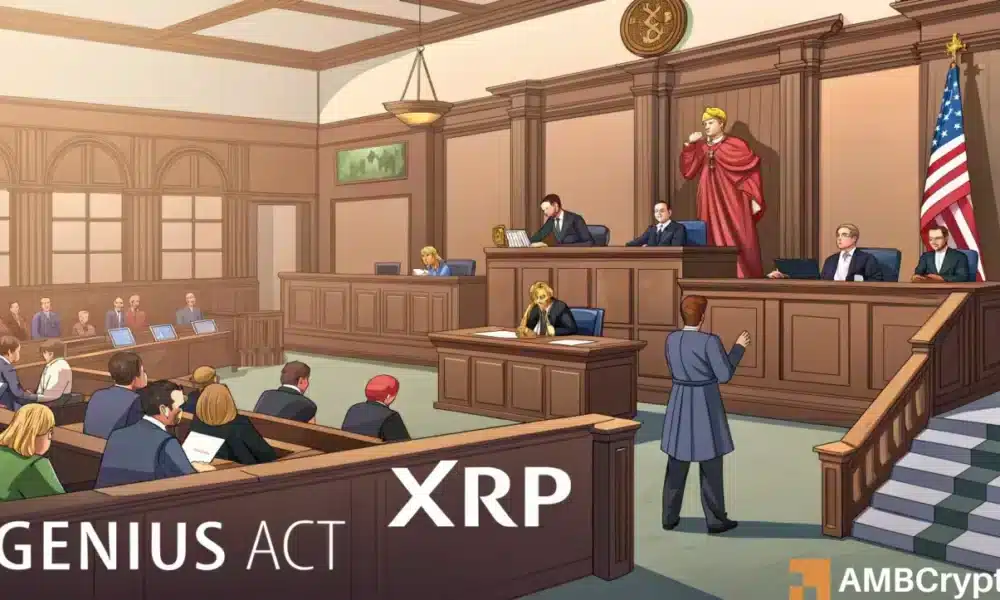Key Takeaways
Versan Aljarrah believes Ripple’s RLUSD will serve as the U.S. Treasury’s primary tool to globalize the dollar and soon replace unregulated stablecoins like Tether’s USDT.
After months of negotiations, lawmakers have finally approved the GENIUS Act, marking a major milestone in U.S. crypto regulation.
While the legislation aims to streamline oversight and strengthen trust in stablecoins, industry leaders argue that its true impact could extend far beyond basic compliance.
Versan Aljarrah on XRP’s rise
Versan Aljarrah, co-founder of Black Swan Capitalist, has floated a bold prediction that Ripple [XRP]’s upcoming stablecoin, RLUSD, could become the U.S. Treasury’s weapon of choice in globalizing the digital dollar.
According to Aljarrah, the GENIUS Act may pave the way for RLUSD and XRP to not only rival, but eventually dethrone Tether’s USDT dominance, especially as Ripple’s blockchain gains traction in institutional finance.
Aljarrah said,
“With the legal framework for stablecoins now in place, RLUSD operates today as a fully compliant, institution grade U.S. dollar stablecoin, backed 1:1 by dollar deposits, short-term U.S. Treasuries, and other cash equivalents, and issued natively on the $XRPL.”
He added,
“By tokenizing U.S. debt and integrating it with XRP’s liquidity layer, RLUSD can enable real-time, cross-border settlements. This is how value moves globally in a post-SWIFT world.”
Aljarrah’s vision
Aljarrah highlights central banks’ record-breaking gold purchases, mounting pressure on the dollar, and rising deficits as evidence that the U.S. has exhausted its traditional monetary tools.
Hence, to restore credibility without triggering default, he proposes repricing gold, tokenizing sovereign debt, and building the system on XRP.
While RLUSD is currently backed by Treasuries and cash, he envisions a future where a gold-backed stablecoin on the XRPL delivers transparency, liquidity, and global credibility.
He frames the next evolution as a gold-backed Treasury token that can rebuild trust and restructure debt without weakening the dollar.
How is GENIUS Act acting as a catalyst?
Aljarrah further argues that the GENIUS Act establishes the foundation for compliant, Treasury-backed digital assets and is already driving capital away from opaque stablecoins like Tether toward regulated alternatives like RLUSD.
He points out that Ripple has fully deployed its infrastructure and that XRP already bridges tokenized assets across networks, signaling that the shift is well underway.
Therefore, he urges early movers to position themselves now, as the new financial system continues to take shape.
Remarking on the same lines, he concluded it best when he said,
“That’s why I always say don’t sell your $XRP. It’s not just another altcoin, it’s the new financial plumbing, and it’s becoming monetary policy right before your eyes. The GENIUS Act isn’t just regulation, it’s the catalyst.”
What’s more?
Needless to say, the GENIUS Act is reshaping the digital asset space, boosting compliant stablecoins like RLUSD and also fueling bullish sentiment around Ethereum [ETH], which may target $4K by Q3’s end.
Meanwhile, Tether’s USDT faces growing scrutiny, currently only 81.5% compliant, though it has three years to align.
With its CEO hinting at a U.S.-focused stablecoin, the market appears set for a shift, where compliance, transparency, and institutional-grade infrastructure will define the next phase of dominance.


